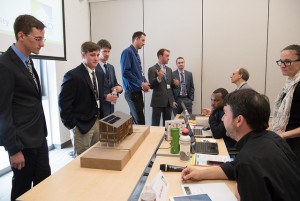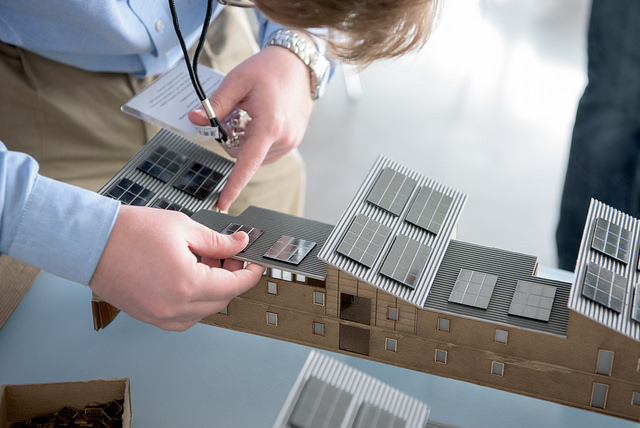Homebuilders consider many factors when designing new homes and one of the most important is choosing energy efficient materials to control heating and cooling use in the home. For insulation, spray polyurethane foam (SPF) offers unique benefits that can help lower energy costs* and strengthen a home’s structure while also achieving energy efficiency goals and reducing greenhouse gas emissions – benefits future homebuilders took advantage of in this year’s Race to Zero Student Design Competition.
The Department of Energy’s Race to Zero Student Design Competition was created to inspire students to design the next generation of zero energy ready homes with features that sharply reduce energy use and offset most, if not all, of the remaining energy needs with renewable energy. This year’s competition featured 36 teams from 27 collegiate institutions that presented market-ready designs that met design standards for zero net energy ready homes.
Two of the winning designs featured SPF, including the grand winner and Urban Single-Family Housing Contest winner Prairie View A&M University’s Green Future Double Barrel House. The Green Future Double Barrel House used SPF insulation to complete the design’s continuous thermal and air barriers. This design feature wraps the home in a protective layer of insulation to increase efficiency and minimize air leaks. The Appalachian State University’s Team (re)Connect Resilient House also utilized SPF to bring home the award for top Suburban Single-Family Housing design.

- Appalachian State (Photo Credit: Ellen Jaskol/NREL, DOE Race to Zero)

- Appalachan State (Photo Credit: Ellen Jaskol/NREL, DOE Race to Zero)

- Prairie View A&M (Photo Credit: Ellen Jaskol/NREL, DOE Race to Zero)

- Prairie View A&M (Photo Credit: Ellen Jaskol/NREL, DOE Race to Zero)
I’m delighted that the American Chemistry Council’s (ACC) Spray Foam Coalition is a repeat sponsor of the Competition. We believe that SPF is a great fit for net zero energy home designs because it can add high R-value insulation to the home’s roof and walls, and eliminate costly air leaks that account for up to 40% of energy loss in a typical home. These energy savings benefits of SPF are keys to controlling energy use in net zero energy homes, which translates into significantly lower levels of greenhouse gas emissions entering the environment from traditional energy sources.
*Savings vary. Find out why in the seller’s fact sheet on R-values. Higher R-values mean greater insulating power.





